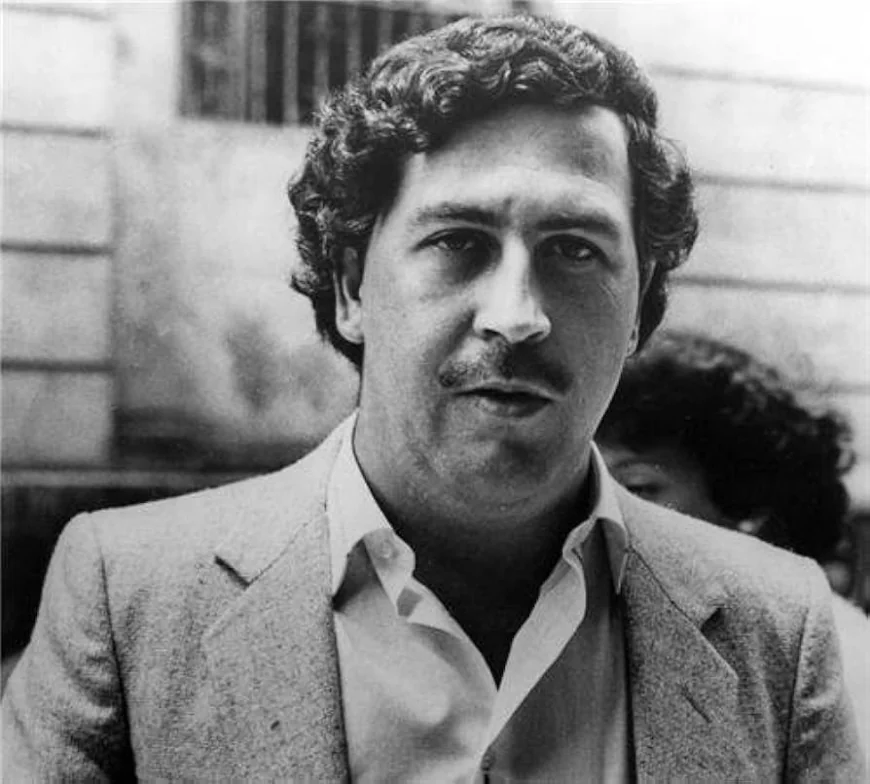Pablo Escobar Net Worth, Relationships, Age/Birthdate & Birthday Facts
Discover Pablo Escobar net worth, relationships, age/birthdate and birthday in this in-depth profile of the Colombian drug-lord’s personal life and empire.

Pablo Escobar Net Worth, Relationships, Age/Birthdate & Birthday
Pablo Escobar is a Colombian drug lord and crime-boss whose notoriety stems from founding and leading the Medellín Cartel and becoming one of the richest criminals ever.
Introduction
Pablo Emilio Escobar Gaviria, born December 1, 1949 (birthday: December 1), rose from modest beginnings in Colombia to build one of the most powerful drug empires in history. Estimates of Pablo Escobar net worth vary—some place it around US$30 billion at his peak. He was married to María Victoria Henao and had two children, marking a relationship status that significantly shaped his personal life and legacy.
Quick Facts
| Category | Details |
|---|---|
| Full Name | Pablo Emilio Escobar Gaviria |
| Age/Birthdate | December 1, 1949 |
| Birthday | December 1 |
| Nationality | Colombian |
| Profession | Drug lord; founder of the Medellín Cartel |
| Estimated Net Worth | ~$25–30 billion (highest published estimates) |
| Relationship Status | Married to María Victoria Henao |
| Known For | Leading the Medellín Cartel; dominating global cocaine trade |
From Street Smarts to Global Infamy
Growing up in the poorer neighbourhoods of Medellín, Colombia, Escobar was born into humble circumstances and quickly gravitated toward small-time crime, including car theft and contraband. His age/birthdate (December 1, 1949) placed his formative years amid the rapid urbanisation and social tension of 1950s–60s Colombia.
Defining moments in Pablo Escobar’s journey include:
-
Establishing the beginnings of his smuggling operations in the early 1970s.
-
Founding the Medellín Cartel and pioneering large-scale cocaine routes into the United States.
-
His brief entry into Colombian politics as a representative of the Liberal Party, which gave him public visibility and political cover.
-
The launch of his lavish estate, Hacienda Nápoles, symbolising both his wealth and excess.
-
The violent campaign against extradition and the Colombian state, marking a turning point in his war-with-the-state phase.
The Core Pillars of Pablo Escobar’s Wealth
The core pillars of Pablo Escobar’s wealth include:
-
Cocaine trafficking operations through the Medellín Cartel, controlling a major share of global supply and generating revenues in the hundreds of millions per week.
-
Real-estate and land holdings, including vast rural estates, private zoos, airstrips and luxury homes repurposed to both luxury and logistics.
-
Bribery and political infiltration, which allowed him to reduce risk, access routes, and secure impunity, indirectly adding to his asset base.
Relationships & Family Life
While the public record of Pablo Escobar relationships includes his marriage to María Victoria Henao, his romantic life was layered and complex. In March 1976, Escobar married Henao when she was 15 and he was 26; the couple would have two children, Juan Pablo and Manuela.
Key insights into Pablo Escobar’s relationships and personal life:
-
His marriage to María Victoria provided a veneer of family-man respectability even as his criminal enterprise expanded.
-
He maintained extramarital relationships, including one with journalist Virginia Vallejo (1982–1987), which later led to memoirs exposing his inner circle.
-
His children and widow fled Colombia after his death; the personal legacy remains bound up in both fear and myth.
Lifestyle, Assets & Interests
Beyond his criminal empire, Pablo Escobar led a lifestyle that reflects both passion and purpose, including:
-
His estate Hacienda Nápoles — featuring exotic animals (including hippos), private airstrips, lakes and sculptures.
-
Lavish homes and property units, such as a waterfront Miami residence, reinforcing his international reach.
-
Philanthropic gestures in his home city of Medellín: he funded social housing, football fields and church construction, partly to craft a “Robin Hood” image.
Net Worth Breakdown & Analysis
Estimating Pablo Escobar net worth is inherently difficult given the illicit nature of the assets. Published estimates point toward extremely high figures—while acknowledging uncertainty.
| Category | Estimated Value | Source |
|---|---|---|
| Business Ventures (trafficking) | ~$25-30 billion | Britannica & other encyclopaedic sources |
| Brand Deals & Partnerships | N/A (no formal branded deals) | — |
| Investments & Assets | Significant land, estates, exotic holdings | CelebrityNetWorth estimates |
While Forbes once listed him among billionaires (his quoted net worth in 1987 was ~$3 billion), the true scale of his wealth at the height of his power may have been substantially higher.
Public Image, Legacy & Influence
Pablo Escobar’s public image is polarising. To some in Medellín’s low-income districts he was a benefactor who built homes and sponsored football, gaining the nickname “Paisa Robin Hood.” To others—victims, families of victims, governments—he represents ruthless violence, terror and corruption. His legacy influences how organised crime is understood globally: big-business scale smuggling, state-capture tactics, and extreme wealth derived from illicit trade.
Today his story is often told through documentaries, books and dramas (e.g., the series Narcos)—a testament to his enduring influence on popular culture and the public imagination.
Conclusion
Pablo Escobar’s story is one of rapid rise, immense wealth and dramatic downfall. Born on December 1, 1949 (birthday: December 1), he built an empire whose estimated net worth reached tens of billions. His relationship with María Victoria Henao, two children, sprawling estates and public persona all contribute to a complex personal life intertwined with criminal power. Whether viewed as a social benefactor or feared crime lord, his influence remains undeniable. For the world of organised crime—and the wider sweep of Colombian history—his journey stands as a cautionary and compelling tale: in the pursuit of absolute power, few have cast such a long shadow.

 loveness92
loveness92 





